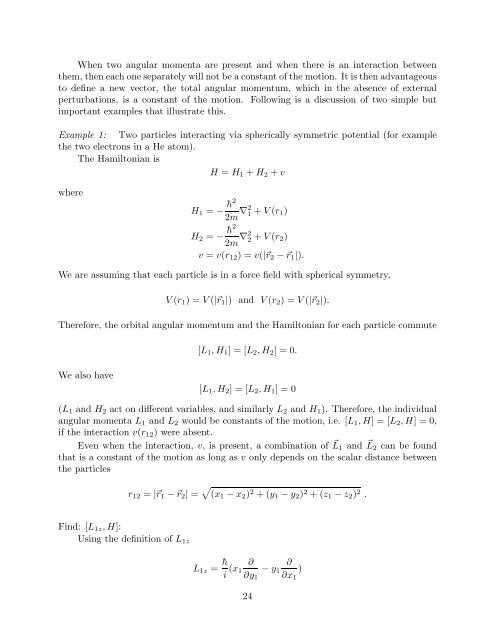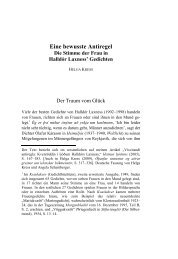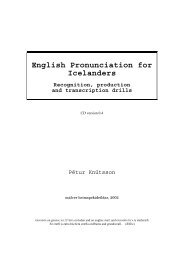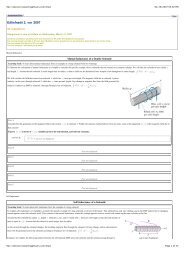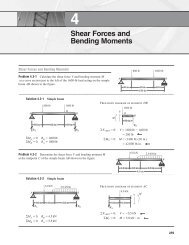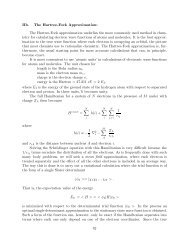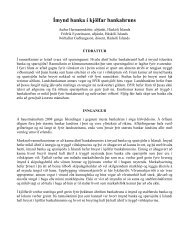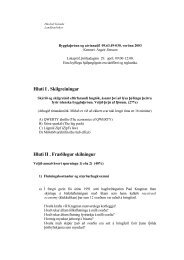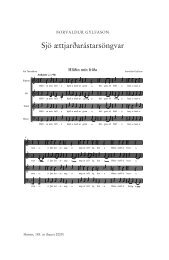Addition of Angular Momenta
Addition of Angular Momenta
Addition of Angular Momenta
Create successful ePaper yourself
Turn your PDF publications into a flip-book with our unique Google optimized e-Paper software.
When two angular momenta are present and when there is an interaction between<br />
them, then each one separately will not be a constant <strong>of</strong> the motion. It is then advantageous<br />
to define a new vector, the total angular momentum, which in the absence <strong>of</strong> external<br />
perturbations, is a constant <strong>of</strong> the motion. Following is a discussion <strong>of</strong> two simple but<br />
important examples that illustrate this.<br />
Example 1: Two particles interacting via spherically symmetric potential (for example<br />
the two electrons in a He atom).<br />
The Hamiltonian is<br />
H = H 1 + H 2 + v<br />
where<br />
H 1 = − ¯h2<br />
2m ∇2 1 + V (r 1)<br />
H 2 = − ¯h2<br />
2m ∇2 2 + V (r 2)<br />
v = v(r 12 ) = v(|⃗r 2 − ⃗r 1 |).<br />
We are assuming that each particle is in a force field with spherical symmetry,<br />
V (r 1 ) = V (|⃗r 1 |) and V (r 2 ) = V (|⃗r 2 |).<br />
Therefore, the orbital angular momentum and the Hamiltonian for each particle commute<br />
[L 1 , H 1 ] = [L 2 , H 2 ] = 0.<br />
We also have<br />
[L 1 , H 2 ] = [L 2 , H 1 ] = 0<br />
(L 1 and H 2 act on different variables, and similarly L 2 and H 1 ). Therefore, the individual<br />
angular momenta L 1 and L 2 would be constants <strong>of</strong> the motion, i.e. [L 1 , H] = [L 2 , H] = 0,<br />
if the interaction v(r 12 ) were absent.<br />
Even when the interaction, v, is present, a combination <strong>of</strong> ⃗ L 1 and ⃗ L 2 can be found<br />
that is a constant <strong>of</strong> the motion as long as v only depends on the scalar distance between<br />
the particles<br />
r 12 = |⃗r 1 − ⃗r 2 | = √ (x 1 − x 2 ) 2 + (y 1 − y 2 ) 2 + (z 1 − z 2 ) 2 .<br />
Find: [L 1z , H]:<br />
Using the definition <strong>of</strong> L 1z<br />
L 1z = ¯h i (x ∂ ∂<br />
1 − y 1 )<br />
∂y 1 ∂x 1<br />
24


